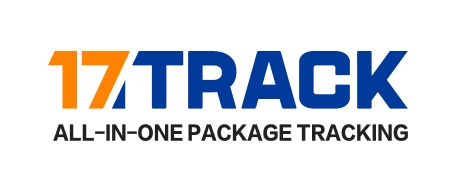The practices of China-Australia freight transportation in environmental protection and sustainable development cover multiple aspects such as regulations and policies, innovation in transportation tools, upgrading of packaging materials, international cooperation, and construction of green corridors. The specific contents are as follows:
I. Regulatory and Policy Drivers: Stringent Standards and Incentives in Tandem
Australia Strengthens Biosecurity and Environmental Regulations
Fumigation Treatment Regulations: Starting from July 1, 2025, Australia will implement the "Methyl Bromide Fumigation Method 3.0", requiring detailed information such as fumigation targets, country of origin, and place of departure on fumigation certificates for goods exported to Australia (such as wood products and agricultural products), and accepting compliance certificates issued by Chinese customs or Australian-certified enterprises to reduce biosecurity risks.
Automobile Emission Standards: As of January 1, 2025, Australia will enforce the New Vehicle Emission Standards (NVES), imposing fines on high-emission vehicle manufacturers to promote the transition of the transportation sector towards low emissions.
China Advances Green Freight Policies
Vehicle Management: Starting from July 1, 2025, China will enforce the "Detailed Rules for the Management of Commissioned Installation of Truck Road Motor Vehicle Products", cracking down on illegal modifications and promoting the scrapping and renewal of old operational trucks. Financial subsidies will be provided to owners who scrap vehicles with emission standards of National IV and below.
Promotion of New Energy: Many regions have introduced policies to encourage the use of new energy trucks. For instance, Yunnan Province offers a 10% toll reduction for new energy trucks using ETC toll payment within the province, and Henan Province waives tolls for hydrogen fuel cell trucks.
II. Transport Tool Innovation: Transition to New and Clean Energy Sources
Application of Electric and Hydrogen Vehicles
Chinese logistics enterprises are gradually phasing out traditional fuel trucks and switching to electric or hydrogen fuel cell trucks for last-mile delivery. For example, SF Express optimizes flight routes and increases aircraft loading rates to reduce aviation carbon emissions, and collaborates with airlines to secure fixed cabin space to avoid empty flights.
Australian cities draw on international experience and implement night-time delivery policies, requiring large trucks to enter urban areas at night and install noise reduction devices to minimize noise pollution.
Low-Carbonization of Maritime Transport
The China-Australia maritime shipping route adopts low-carbon vessels, such as those powered by liquefied natural gas (LNG) or with optimized hull designs to reduce resistance. The sea-truck intermodal transport model (maritime + truck delivery) reduces overall carbon emissions by minimizing transfer links.
The International Maritime Organization (IMO) has adopted the MARPOL Convention Annex VI amendment, requiring ships to report fuel consumption data and promoting decarbonization in the shipping industry.
III. Packaging Material Upgrade: Biodegradable and Recyclable Materials
Promotion of Green Packaging Materials
Logistics enterprises in China and Australia widely use biodegradable and recyclable packaging materials to reduce plastic pollution. For instance, Jicheng China-Australia Logistics uses eco-friendly packaging in its FBA first-mile services and promotes packaging standardization and modularization to avoid excessive packaging.
The application of bio-based materials (such as corn starch-based foam) and recycled plastics is gradually becoming widespread, reducing reliance on traditional plastics.
Establishment of a Circular Packaging System
Some enterprises are piloting circular packaging boxes, achieving multiple uses through leasing or recycling models. For example, some Australian e-commerce companies and logistics providers have launched foldable and easy-to-clean circular packaging boxes, reducing single-use packaging costs while minimizing waste generation.
IV. International Cooperation and Standard Alignment: Collaborative Promotion of Green Logistics
Cooperation under the China-Australia Free Trade Agreement
The China-Australia Free Trade Agreement's rules of origin for imported and exported goods facilitate trade between the two countries and promote the alignment of environmental standards. For instance, Australia's biosecurity requirements for goods exported to Australia are mutually recognized with compliance certificates from Chinese customs, reducing customs clearance delays.
Construction of Green Shipping Corridors
The "Australia-East Asia" green corridor adopts a strategy of major cargo owners and major shipowners, led by iron ore producers such as BHP and Rio Tinto, in collaboration with shipowners, ports, and fuel suppliers, to deploy clean alternative fuels and optimize port infrastructure.
Japanese shipowners are actively investing in the green transition, and the Australia-Japan shipping route has become a recommended green shipping corridor by the Global Maritime Forum, attracting more stakeholders to participate in decarbonization cooperation. V. Technological Innovation Empowerment: Digitalization and Intelligence Transformation
Internet of Things and Blockchain Technology
Real-time monitoring of goods' temperature, humidity and transportation status through sensors reduces repeated transportation due to damage. For instance, SF Express deploys IoT devices in cold chain transportation to ensure full control over fresh goods throughout the process.
Blockchain technology is applied in carbon emission tracking and supply chain transparency. For example, Chinese and Australian enterprises have jointly developed a blockchain platform to record the carbon emissions data of goods throughout their life cycle, providing a reliable basis for carbon trading.
Automated Warehousing and Sorting
Logistics enterprises increase investment in automated equipment to enhance warehouse efficiency and reduce energy consumption. For instance, SF Express has built an intelligent overseas warehouse in Australia, using robots for sorting and an automated storage system, which reduces the need for human labor while lowering energy consumption for warehouse lighting and air conditioning.


